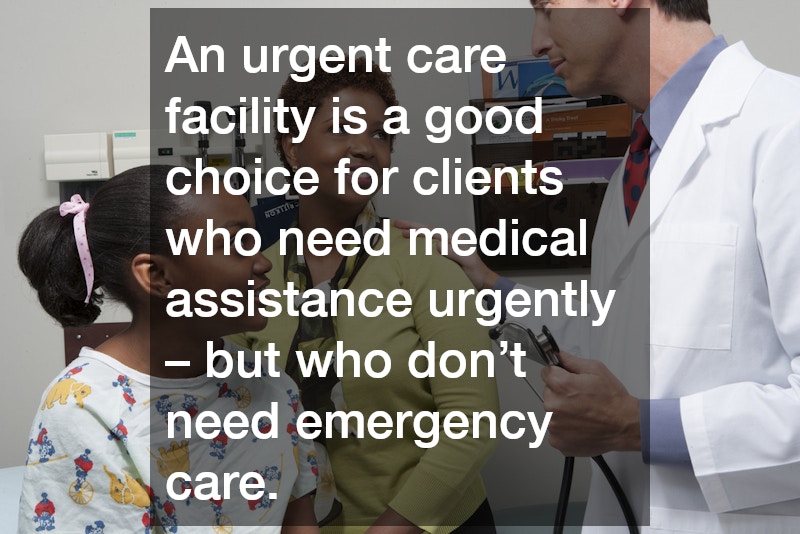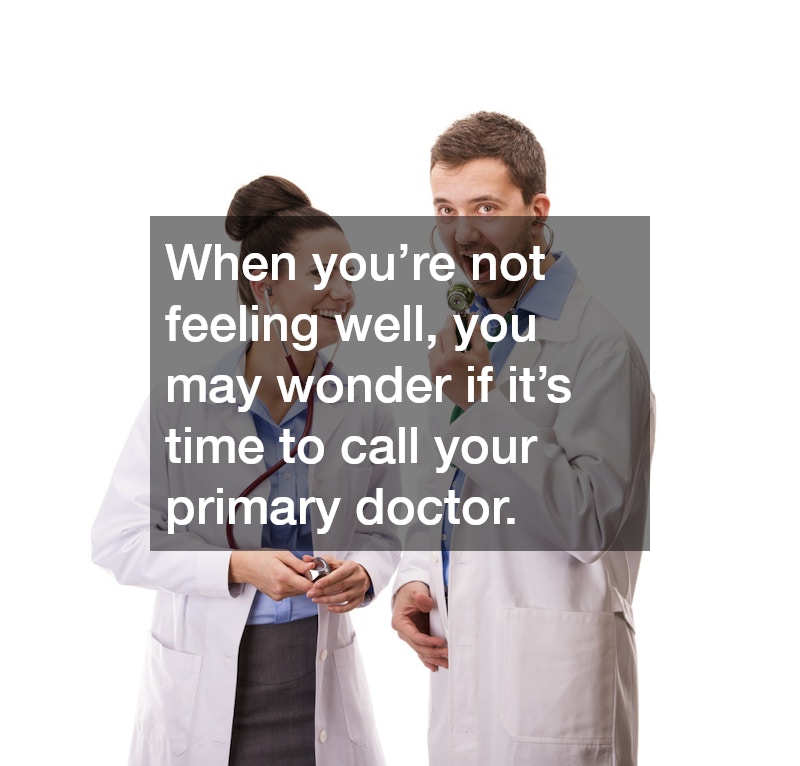
When you’re not feeling well, you may wonder if it’s time to call your primary doctor. You may also wonder if you should wait for a primary care appointment, go to an urgent care facility, or drive to an emergency room. Although you may prefer to see your regular physician since they are a caring doctor, don’t let that stand in your way if you truly need emergency care.
According to Better Team, a family doctor’s responsibilities include diagnosing and treating illness. They use their accumulated knowledge of a client’s health history to make informed decisions about that client’s general care. A primary doctor is charged with forming a relationship with their clients.

An urgent care facility is a good choice for clients who need medical assistance urgently – but who don’t need emergency care. For example, a client with a sprained ankle, a minor cut or scrape, or an earache. Clients who have serious issues, such as left-sided chest pain, a fracture, or a severely bleeding wound, should go to the emergency room. Anyone who goes to the ER or an urgent care facility should always remember to tell the staff if they are under the physician’s care.

There is a lot of talk in the United States these days about health care. The issue has become so politicized and controversial it can be easy to wonder whether or not the country will ever see a better, cheaper, and more accessible health care system for all. But until a new solution is legislated, we can at least have some peace of mind in the fact that there are several different medical facilities around the country. Some of these centers are generalized while others are specialized, meaning there are options for the broad spectrum of illnesses and injuries that humans can encounter. Additionally, there is care out there for any type of person, regardless of age, ethnicity, disability, or gender.
So what are some of these facilities, and what do they do? Here we will take a look at the three most prominent types of medical center in the United States. These include urgent care clinics, emergency centers, and comprehensive specialized pediatric care centers. Each type of clinic serves a different, important function for the health and well-being of people.
Urgent Care
Most people are probably already familiar with urgent care centers. After all, there are more than 9,300 of them around the country right now, and hundreds of new clinics open every few years. As their name suggests, these facilities are designed for patients with needs that are urgent but not life-threatening (that’s what the ER is for, which we will get to next). People will sudden minor to moderate conditions or injuries that need to be examined immediately might go to an urgent care center first. Here they will most likely experience a wait of only 5 to 15 minutes and have their issue diagnosed in a professional and efficient manner. Doctors in urgent care facilities can prescribe treatments for patients as well. The entire visit will most likely end up costing about the same or less than a visit to a primary care provider, and will certainly cost less than a visit to the emergency room. Urgent care centers are typically pretty small, with 6 to 10 examination rooms.
Emergency Room
As previously mentioned, emergency rooms (ERs) are where those with serious, sometimes life-threatening injuries and illnesses go to receive the best, fastest, and most comprehensive treatment. ERs are much bigger than urgent care facilities, since more equipment, staff, and space is needed for the patients who are brought here. Additionally, there are typically more than 25 private treatment rooms in an ER. These centers are open 24 hours a day since anything can happen at any time (going into labor, for instance). Before the prominence of urgent care centers, ERs were often overwhelmed by the amount of patients, many of whom weren’t in a bad enough condition to warrant it. Now, however, ERs can focus more on patients who really need immediate attention while urgent care centers can handle less serious cases.
Comprehensive Specialized Pediatric Care
Primary care centers are there for when it comes to regular check-ups. Children, especially very young children, typically need more check-ups than older children and adolescents. Comprehensive specialized pediatric care centers focus on these children and their needs. For instance, comprehensive specialized pediatric care professionals will deliver vaccines, check for respiratory issues, and more. Parents who bring their child to one of these centers can better ensure the health of their child by better preventing illnesses that can worsen over time and necessitate a visit to the ER. Some areas of the country didn’t offer as many pediatric services in the past, meaning sometimes kids would have to compete in line with adults at urgent care facilities to be examined. However, in recent years more pediatric care centers have emerged in these previously lacking places, providing more care for children who need it.
There is no doubt that health care will remain a subject of debate for several years to come in the U.S. People’s health is an important issue, and barriers like accessibility and cost can stand in the way of this. However, with more urgent care, emergency, and pediatric centers opening up across the country, there is at least a hint of optimism that more people can receive health services they might not have been able to before.
